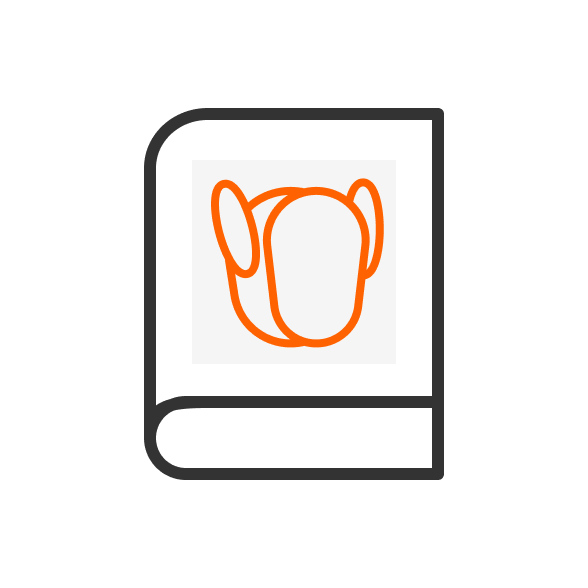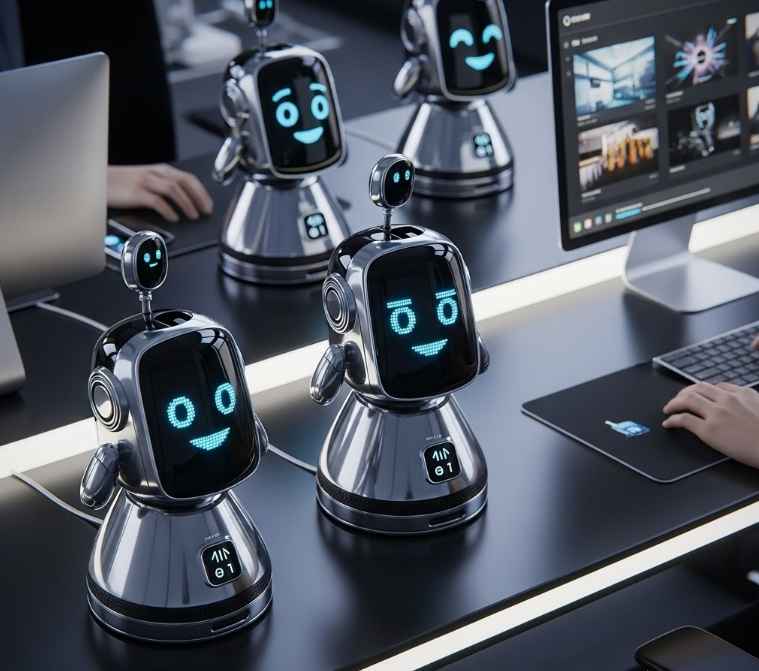Many older dogs develop Canine Cognitive Dysfunction (CCD), or doggy dementia. Naturally, you want to help your aging companion. Dementia dog toys are designed for this purpose – they aim to engage and stimulate older brains.
You might wonder: do these toys actually help? And how do you pick the best ones? We’ll explore that next.

Understanding Canine Cognitive Dysfunction (CCD)
Think of CCD as similar to Alzheimer’s in humans. It’s a brain condition affecting memory, learning, awareness, and perception. Watch for these signs:
- Confusion: Getting lost in familiar rooms, staring at walls or into corners.
- Changed Behavior: Withdrawing from family, seeming distant or detached, or unusually clingy behavior.
- Sleep Problems: Restlessness at night, excessive daytime sleep.
How Dementia Dog Toys Help: The Science Behind the Fun
It boils down to neuroplasticity – your dog's brain can adapt and form new connections, even as they age. These special toys help by:
Giving Brain Workouts: Mental challenges keep their mind sharp. Toys make them think, solve puzzles, and focus – working key thinking skills.
Easing Boredom & Worry: Pacing often comes from confusion or emptiness. Toys give positive focus, channeling mental energy and easing anxious feelings.
Awakening Senses: Many use textures, sounds, or scents (like food puzzles) to engage fading senses, keeping your dog tuned into their world.
Boosting Confidence: Solving a puzzle brings pride. That confidence boost brightens the day for a confused dog.
Choosing the Right Toy: A Quick Guide
| Feature | Why It Matters for CCD Dogs | Look For | Difficulty |
|---|---|---|---|
| Prevents frustration, builds confidence | START VERY SIMPLE! Adjustable levels ideal. | Safety | Prevents choking, injury, non-toxic materials |
| Large parts, smooth edges, certified materials. | Food Motivation | Essential for engagement & reward | Use high-value, smelly treats. |
| Ease of Use | Seniors may have reduced dexterity/vision | Large pieces, clear mechanisms, tactile cues. | Durability |
| Withstands potential chewing or pawing | Sturdy plastic, tough fabric, strong silicone. | Washability | Hygiene is crucial, especially with food toys |
| Machine washable or easy to scrub. | Sensory Appeal | Engages declining senses, maintains connection | Different textures, food scents, gentle sounds (optional). |
Key Features of Effective Dementia Dog Toys
Not every puzzle works for older dogs with CCD. Look for these must-have features in puzzle toys for dogs with canine dementia:
Simple to Use: Avoid tricky mechanisms. Start very easy—only make it harder if your dog enjoys it. Frustration can make anxiety worse.
Safety First: Always choose toys with big, unswallowable pieces, safe materials, and no sharp edges. Always watch them play, especially at first.
Right Challenge: Find toys that are "just right"—not too boring, not too tough. Adjustable ones work best.
Food-Powered: These toys work best with treats. Use smelly, high-value rewards (tiny cheese bits, chicken, soft treats) to grab attention and celebrate effort.
Tough & Washable: Older dogs might play gentler or chew softer. Pick sturdy, easy-to-clean toys.
Mix It Up: Rotate a few different toy types to keep it interesting and work different parts of their mind.
Top Types of Dementia Dog Toys (and Recommendations!)
Here's a breakdown of effective toy categories, keeping our keywords in mind:
Simple Snuffle Mats & Foraging Toys:
Why they work: Uses your dog’s natural nose-hunting urge to find hidden treats. Easy on older bodies but keeps their mind busy.
Great for: Less mobile dogs, anxious pups, or those just starting to show confusion. Perfect easy-to-use puzzle toys for elderly dogs.
Try this: [Snuffle Mat Pet Dog Feeding Mat, machine-washable snuffle mat with different hiding spots. Currently $27.99, originally $29.99].
Basic Slide or Push Puzzles:
Why they work: Dogs reveal treats by just nudging pieces with their nose or paw. They quickly learn nudging = treat!
Great for: Teaching simple problem-solving. Top choice as interactive dog toys for senior dogs with cognitive dysfunction.
Try this: [Nina Ottosson Dog Brick Treat Puzzle Enrichment Toy for little or smart dogs, Multiple ways to play, Provides mental stimulation to help bust boredom. Currently $10.95, originally $12.99]
Lick Mats & Slow Feeders (with a Twist):
Why they work: Licking calms nerves! Smear tasty mush (dog-safe pumpkin, yogurt, peanut butter) on textured mats. It turns snack time into long, soothing brain time—even if they’re not for food.
Great for: Anxious pups, quiet play, or dogs with low energy. Works great as a calming dementia dog toy.
Try this: [Coomazy Lick Mat for Dog, Strong Suction Design, Non-Slip, relieve anxiety, and inhibit destructive behavior, food Grade Silicone. $9.99].
Low-Tech Interactive Toys (with Human Help):
Why they work: Simple games like "Which Hand?" (hiding a treat in one fist) or gentle rolling a treat-dispensing ball provide interaction and mental focus without complex mechanics.
Great for: Bonding, very low cognitive function, or dogs overwhelmed by physical puzzles. Emphasizes the human element in using interactive dog toys for senior dogs with cognitive dysfunction.
Try this: [HIPPIH Dog Puzzle Toy, a great treat dispenser, rubber material, perfect for fetch and interaction. $9.99].
Realistic Expectations: Toys Are Tools, Not Miracles
Keep these points in mind:
Small Steps: Changes happen slowly. Celebrate little wins: brief focus, less pacing, a calm moment, or sudden curiosity.
Part of the Plan: Toys help but aren’t a cure. Always pair them with vet care (meds if needed), steady routines, home tweaks (like night lights), good food, and endless patience.
Every Dog Differs: A toy that helps one dog might do nothing for another. Stay open to trying new options.
Watch Their Mood: If your dog seems upset or stressed, stop right away. Switch to simpler toys or shorter sessions. Keep playtime short and happy.
FAQ: Your Dementia Dog Toy Questions Answered
Q: My dog's dementia seems advanced. Is it too late for toys?
A: It's likely not too late, but focus on comfort. Choose super simple puzzles or calming options like lick mats or easy snuffle mats. Aim to ease anxiety and create happy moments, not challenge them. Always talk to your vet.
Q: How often and how long should I use these toys?
A: Short and sweet wins! Keep sessions between 5 to 15 minutes, 2–3 times daily. Match this to your dog’s mood and energy. Always end with a win—and never force play if they’re tired or upset.
Q: My dog isn't food motivated anymore. What can I do?
A: This often happens later on. Try super smelly, high-value treats (think warm meat, fish, or special soft foods). Gently warming them can boost the scent. If treats don’t work, focus on gentle games with you—like a favorite soft toy or simple petting—or texture mats without food. Always check with your vet about appetite loss.
Q: Are electronic/smart toys okay for dementia dogs?
A: Be very careful. Loud sounds, quick moves, or flashing lights can easily overwhelm a dog with CCD. Choose simple, predictable toys instead. If you test one, pick the most basic option and watch them closely.
Q: Besides toys, what else helps slow CCD?
A: Fight CCD with several things together:
Vet Visits: Regular check-ups. Ask about meds or supplements (like Senilife, Aktivait, or Selegiline).
Steady Routine: Same meal times, walks, and bedtimes daily. Predictability eases confusion.
Brain Food: Try senior diets with brain-boosting nutrients (omega-3s, antioxidants). Ask your vet first!
Safe Space: Keep furniture where it is. Use night lights, add rugs for grip, block stairs if needed.
Gentle Walks: Short daily "sniffaris"—let them explore smells. Good for body and mind.
Your Calm: Patience, love, and a reassuring voice help most.
The Verdict: Yes, They Can Help!
Dementia dog toys aren’t a quick fix, but they’re proven help for managing CCD. Pick easy-to-use puzzle toys for elderly dogs that match their current skills. The right ones:
- Deliver vital brain exercise
- Cut anxiety and boredom
- Build confidence
- Can genuinely help slow down canine dementia progression
Start simple. Watch your dog closely. Focus on safety and fun. Use these interactive dog toys for senior dogs with cognitive dysfunction as part of your loving care plan.







